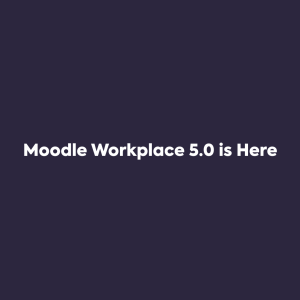
Once the final day comes, and your new learning platform is finally live, it’s tempting to breath a sigh of relief, then turn to address the mounting pile of work you’ve been ignoring for the last few weeks.
Launch day though, is really only the start of the process. Following the “birth” of your new platform there’s a great deal of nurturing and nourishing to do to ensure it doesn’t falter or fail in the first few weeks or months.
Let’s have a look at some of the more common reasons for a learning platform failing to gain traction within a school, and hopefully help you recognise and avoid these potential dangers.
1. “We forgot to tell the boss”
As with any new initiative, the successful launch and growth of a new learning platform is going to need buy-in and support from senior management.
It’s no good viewing the platform as an issue for the IT department to deal with alone, as if it were a misbehaving printer. For e-learning to be successful in a school, the whole community needs to be on board, and the most influential decision makers are a key part of that mix.
Ensure that your senior leadership team are involved, and engaged at each step of the process, consulted on key decisions, and kept up to date with progress. By launch day, they’ll be as excited as you are about the new system, and ready to champion its use as it rolls out to staff, students and parents.
2. “We’re ‘saving’ money on training and support”
Often when discussing options with your learning platform provider, you’ll seek to minimise unnecessary costs wherever possible – an entirely sensible approach.
However, one mistake we’ve seen many schools make is trying to take on too much of the training and support burden themselves.
Often, the procurement team and technical staff, having been involved early in the process, feel confident enough in the platform that they’re keen to handle staff training and basic support themselves, rather than pay the extra money to have this service provided.
It’s not solely a question of expertise though. Training and support activities can quickly become a drain on already limited schedules and resources, not to mention the need to “reinvent the wheel” by authoring manuals, guides and documentation which may already be available as part of the providers standard service.
In many schools, this translates to a lack of appropriate training being delivered, after the “honeymoon period” with a consequent drop off in terms of staff and students using the learning platform, leaving it to die a slow death.
3. “We’ve neglected the newbies”
In a similar vein to the point above, it’s vital that schools see their training programme as a long term commitment, rather than a discrete activity in preparing to launch the platform.
New staff joining the team will need access to the same level and quality of training to ensure they hit the ground running, while even experienced staff are likely to require regular refresher sessions to bring them up to speed with new developments in the technology.
It’s therefore best to plan regular sessions perhaps once a term or so, to ensure everyone using the system is comfortable and familiar with anything new, and to act as an impetus for any users who may have started to drift away from the platform.
4. “We didn’t test for that scenario”
Another potentially fatal mishap which can stem from trying to reduce spending, or save time is a lack of proper testing of the platform prior to launch and at regular intervals thereafter.
If something major does go wrong once the learning platform is up and running, this can quickly reduce confidence and cause frustration among users, particularly if work is lost or time is seen to have been wasted.
It’s definitely worth putting in the extra time early on to have the platform fully tested for usability, the performance benchmarked under likely load scenarios, and the backup and restoration process checked thoroughly. You want to know your learning platform is going to be able to stand anything you throw at it.
5. “We don’t think the faculty like the new platform!”
We’ve underlined the importance of involving senior management in planning and launching the new platform, but it’s equally crucial to ensure all members of the team feel included in the preparation for and run up to launch day.
New initiatives in schools can sometimes be seen as an imposition by teaching staff, especially if they’re perceived as being forced upon them. Involving a focus group of faculty and administrative staff in the project can mitigate this risk, and allow the whole team to feel they are represented and their opinions and queries are being taken seriously.
This sense of ownership will prompt interest and engagement once the new platform is up and running – leading to better adoption and correct use of the learning platform.
6. “The students don’t seem to care about the learning platform”
The third group of stakeholders in a learning platform, often overlooked, are the students themselves. Their willingness to learn about and make use of the new technology is, at the end of the day, what will dictate the success of the platform.
It’s vital to consider student users and potentially also their parents as part of the training plan, rather than restricting it to staff. This may be something you can request from your provider, or deliver during classroom time, but either way you need to ensure your students are ready and willing to get involved in e-learning, and the features they need are easily accessible to them.
We’d suggest taking some time to plan the launch to students, which could involve presentations during registration time or assemblies, as well as poster campaigns around the school, prizes for exemplary use of the system, and letters home to involve parents in the process.
Your provider may be able to assist you with reporting on students’ use of the platform on an ongoing basis, which will allow you to spot positive or negative trends as they emerge. This can be invaluable information if you want to nip any potential problems in the bud.
7. “We didn’t really think about what to do next”
Forward planning and accurate budgeting are key when it comes to ensuring the long term success of your learning platform. You need to make sure you’ve assigned enough budget to keep up with future training needs, developments to the platform, and licensing or technical support costs. It’s always better to overestimate than underestimate.
Assuming the money’s in place, you’ll need a carefully thought out plan for the rollout and development of the platform listing what you want to achieve, and by what dates. This will allow you to benchmark and continually review the success of the project, and accurately calculate the return on your investment.
Getting it right
When selecting a learning platform provider, you should ask them about the points above, and assess to what extent they’ll be able to support you, not just in launching the new platform, but in implementing and embedding it in day-to-day learning.
Titus learning offer a no-obligation, free consultation service for schools looking for advice on all aspects of e-learning implementation – to request an appointment, get in touch here






